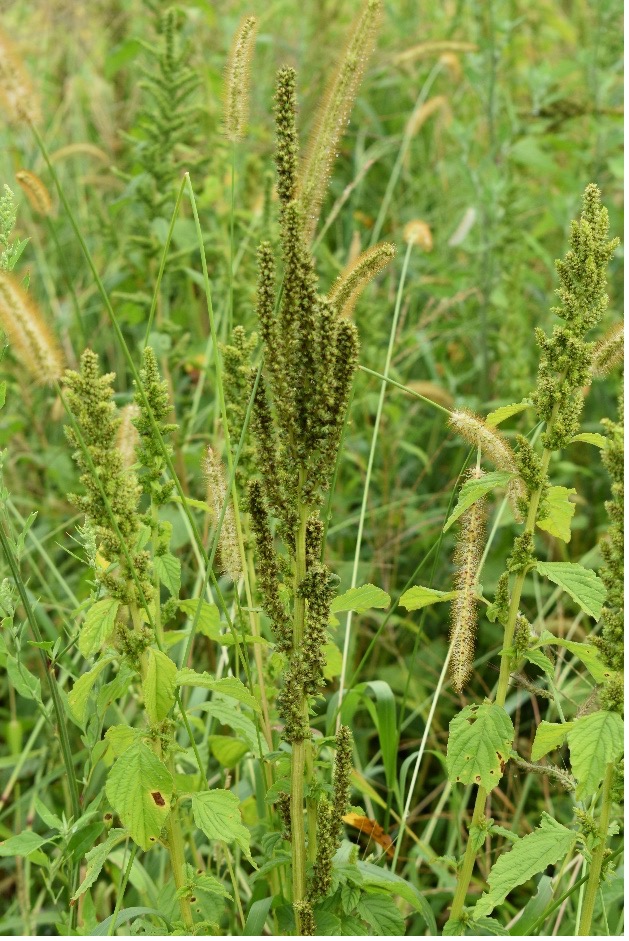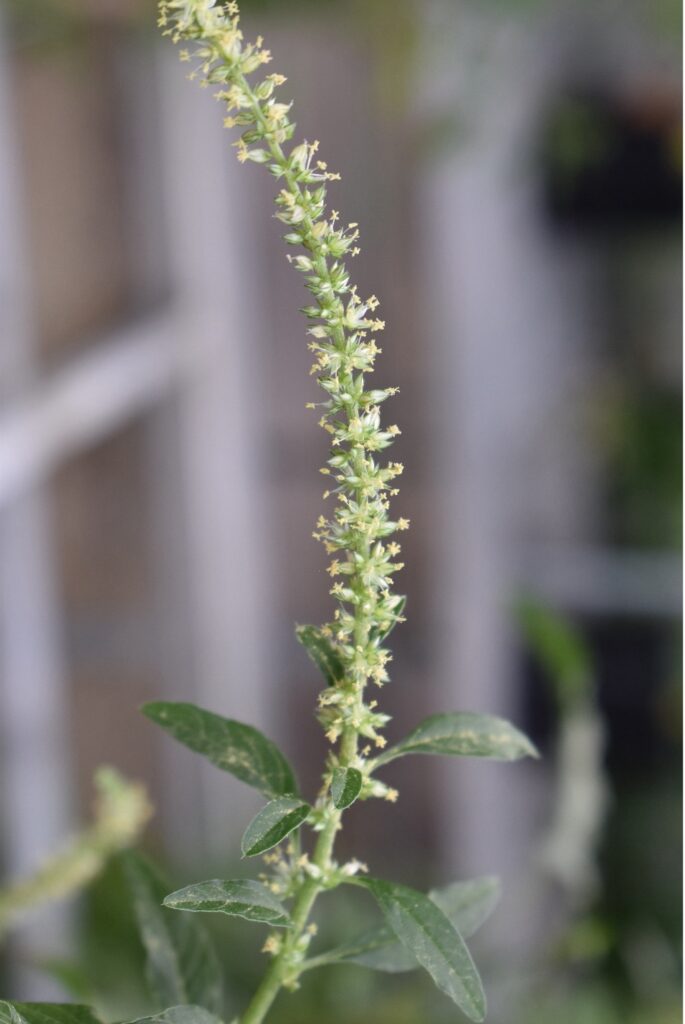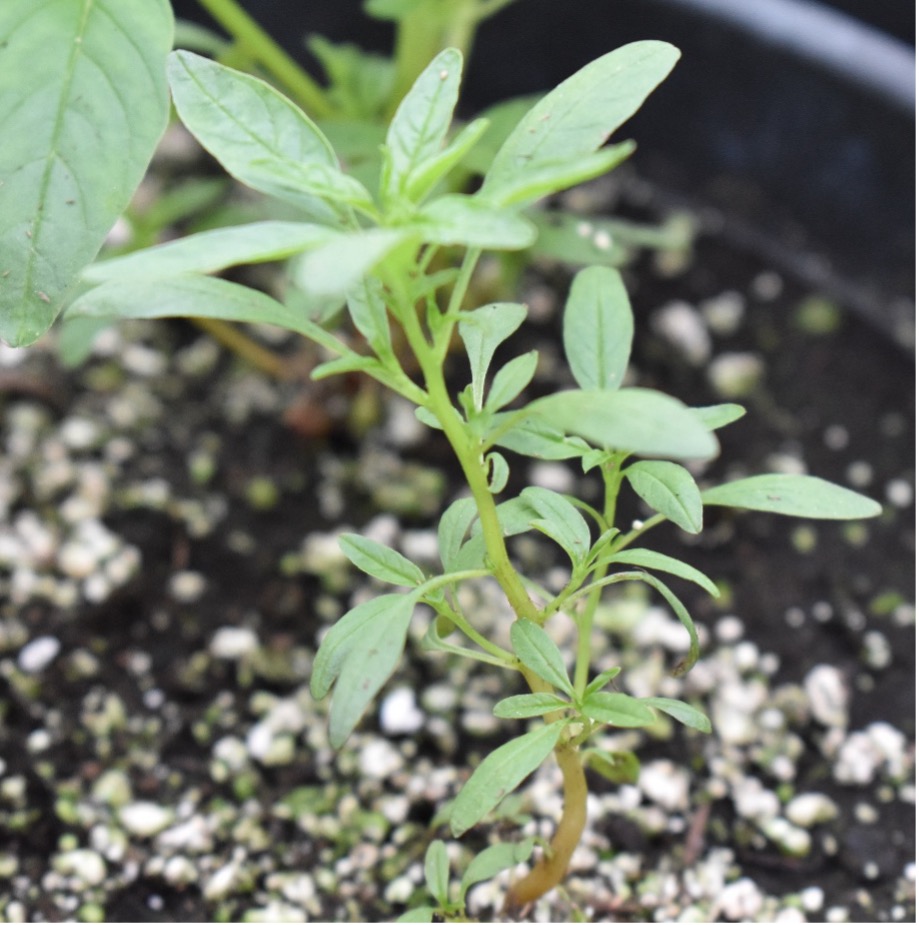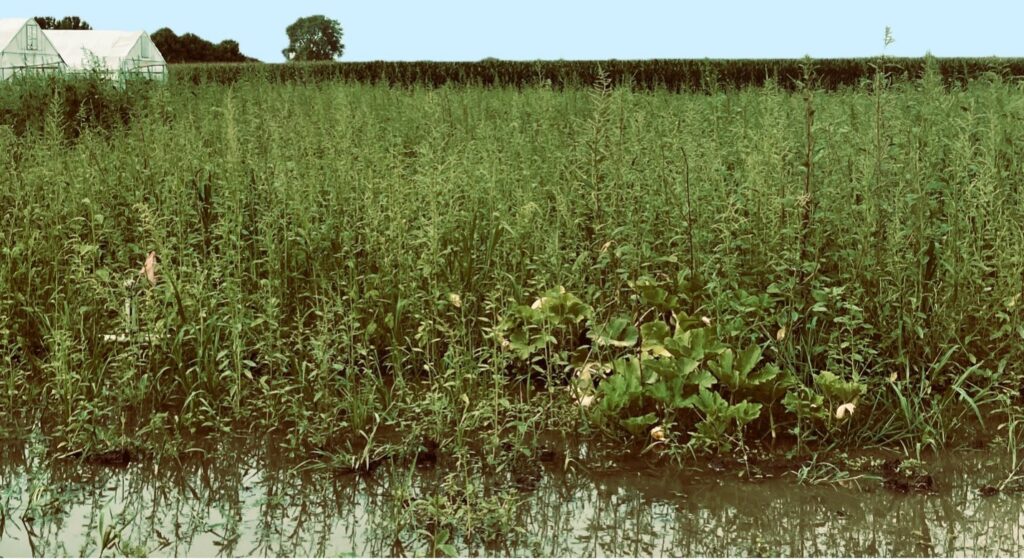Common names: common waterhemp, tall waterhemp
Latin name: Amaranthus tuberculatus
Family: Amaranthaceae (pigweed family)
General description and identification
Waterhemp is an upright, tall, summer annual herbaceous plant. It is native to the United States and has historically been found in waterways and floodplains. Today, waterhemp is often found in disturbed habitats, such as agricultural fields. Waterhemp prefers well drained, nutrient rich soils, but can tolerate a wide range of environmental conditions. The plant can tolerate a soil pH range of 4.5 to 8, but it does not tolerate high salinity levels.
Waterhemp is dioecious, meaning that male and female flowers are produced on separate plants. Female waterhemp plants can produce over 1 million seeds, making the species particularly difficult to eliminate from a site once it has been introduced. Additionally, mature plants can grow up to 8 feet tall, making waterhemp very competitive for sunlight. Adult waterhemp plants have a deep taproot, which makes them competitive for soil water and nutrients. This also makes them difficult to remove and enables rapid recovery after cutting.
Waterhemp can be identified by its:
- Smooth and hairless green to red-pink stems
- Cotyledons (seed leaves), which are oval to lance-shaped and 0.2-0.4” long
- Leaves which are alternate, shiny, hairless, oblong to lance-shaped, and with a tapered, notched tip
- Dioecious plants with clustered, green, almost fluffy inflorescences (flower structures)
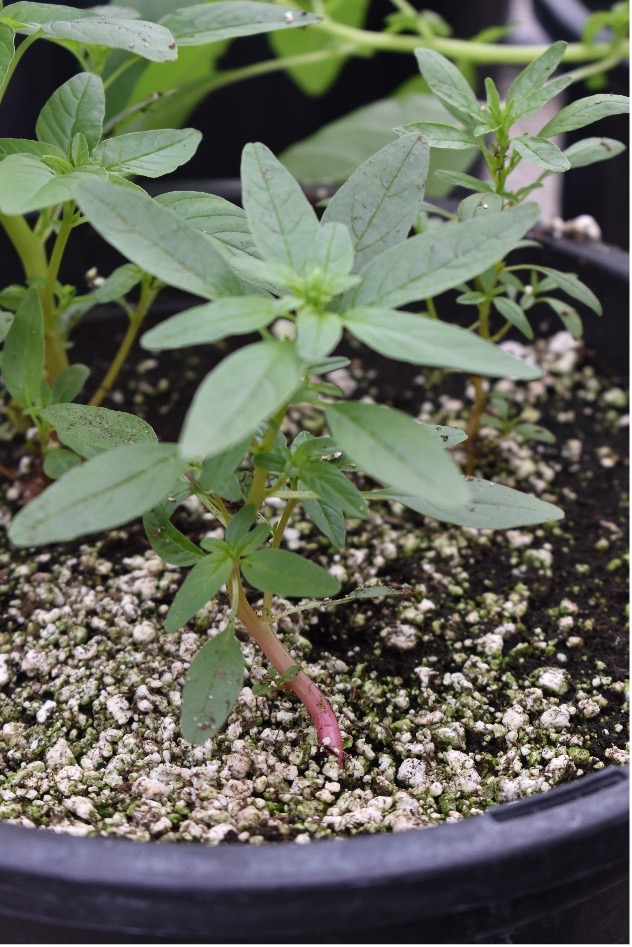
Figure 2. Waterhemp can have green or red stems and leaves with notched tips (Photo by Helen Nocito).
Because it shares the amaranth family with numerous other weeds, waterhemp can be confused with weeds like Palmer amaranth and redroot pigweed. However, Palmer amaranth has longer petioles (leaf stalks) and broader leaves than waterhemp, and will sometimes have white chevron markings on the leaves that waterhemp does not. Additionally, redroot pigweed has hairy stems, while waterhemp’s stems are smooth and hairless.
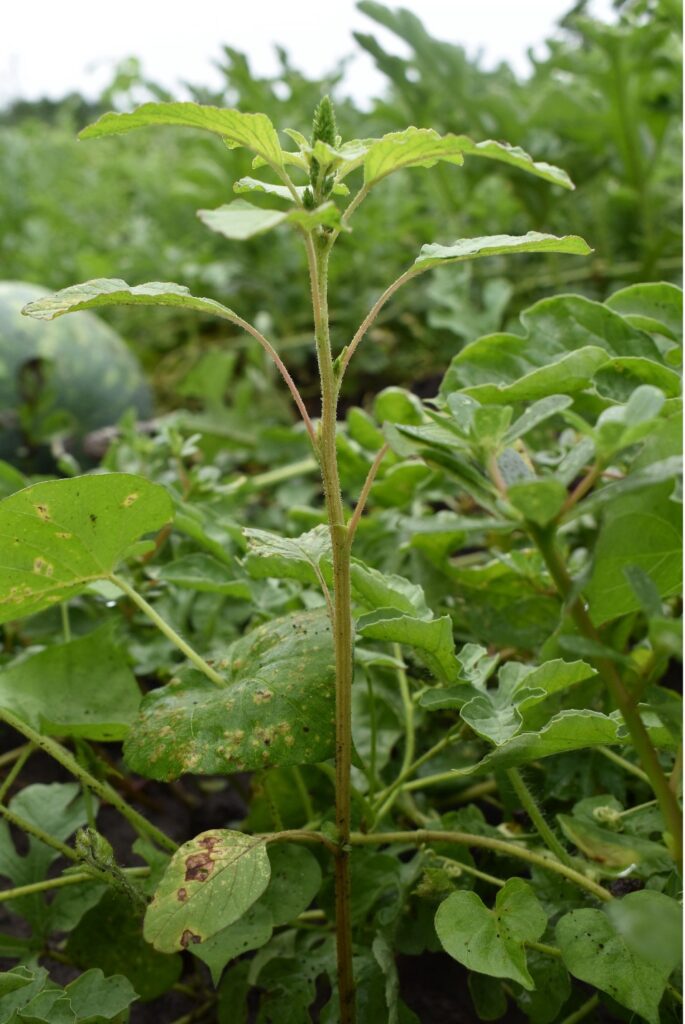
Figure 6. Redroot pigweed in a watermelon patch. Note the fuzzy appearance of the stem from the small hairs (Photo by Helen Nocito).
Control Methods
Waterhemp populations with single and multiple herbicide resistance have been reported in the US. This includes resistance to ALS-inhibitors (Group 2), auxin mimics (Group 4), photosystem II-inhibitors (Groups 5 and 6), EPSPS-inhibitors (glyphosate, Group 9), PPO-inhibitors (Group 14), very long chain fatty acid-inhibitors (Group 15), and HPPD-inhibitors (Group 27). Waterhemp control programs that rely entirely on postemergence herbicides are destined to fail. Integrating chemical and non-chemical controls will provide the best results. Primary tillage is effective in controlling waterhemp seedlings that emerge before planting. Additionally, in-season cultivation is effective in the control of very small seedlings, but larger seedlings and established plants will often re-root. Many pre-emergence (soil-applied) herbicides are still effective at controlling waterhemp, but registered products vary depending on the crop being grown. To control waterhemp post-emergence, it is best to spray while the waterhemp is small (less than 4” in height) and using a multiple-site herbicide regime that takes into account local waterhemp herbicide resistance. Consult the Midwest Vegetable Production Guide (mwveguide.org) to learn more about what herbicides are registered for the crops that you grow.
Fun Fact
Female plants can produce over 1 million seeds.
Literature Cited and Additional Reading:
Waterhemp – Getting Rid Of Weeds

